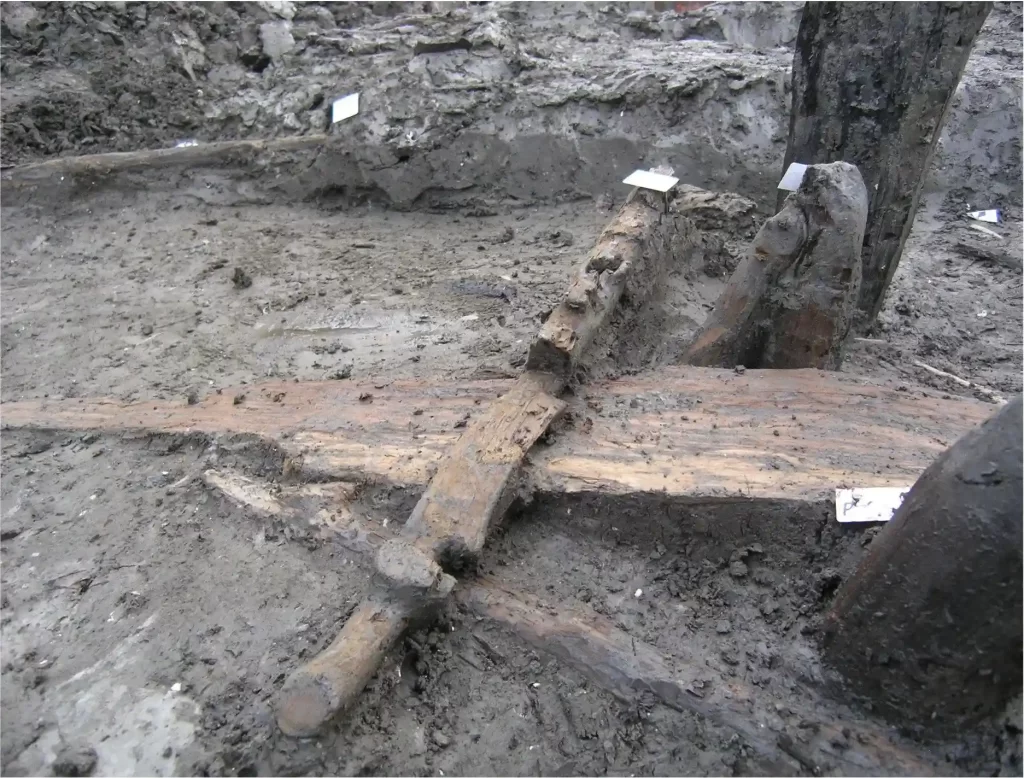A rare 3,300-year-old wooden yoke found in northern Italy
A rare 3,300-year-old wooden yoke discovered in a Late Bronze Age pile-dwelling settlement in Este in the Veneto region of northern Italy has been presented to the public after eight years of complex excavation, recovery and restoration.

The yoke, other wooden objects, metal ornaments and pottery fragments were discovered in 2015 during an archaeological survey before a new methane pipeline was slated to be laid in the Via Comuna.
The area is rich in archaeological remains, hence the investigation along the route of the pipeline expansion, but the presence of a prehistoric Bronze Age settlement was previously unknown.
Dendrochronological and radiocarbon dating of the wooden remains revealed the settlement was in use from the middle of the 14th century to the middle of the 13th century B.C. Before this discovery, a smattering of finds from the period had been made in the Este area, but this is the only clearly structured Bronze Age settlement ever found.
The area was a wetland in the Bronze Age (pile dwellings were built over the water), and the muddy conditions preserved organic remains like wood for thousands of years.
To stabilize the wet wood in laboratory conditions, sections of soil were removed en bloc and transported to the Central Institute for Restoration in Rome where specialists in the conservation of waterlogged wood performed a painstaking micro-excavation, followed by PEG treatment and a controlled drying to stabilize the wood.
The yoke is the stand-out object of the ones excavated so far. It is a head yoke, used by attaching it to the neck of a pair of draft animals (probably oxen) and securing it to their horns with leather straps or ropes. Curved cut-outs were made to fit the yoke snugly around the animals’ horns.
It was originally estimated to be one meter (3.2 feet long), but about foot of it — the section that was mounted to the second animal of the pair — did not survive the millennia.
This is significantly smaller than early modern yokes, evidence that domesticated bovines in the Bronze Age northern Italy were smaller than they would later become.
Of particular archaeological interest is an ancient repair to one of the teeth in the yoke beam to which the horns were strapped. It must have broken off during use and the farmer or craftsman dug out a square hole to insert a new tooth.
Another wooden object found in the 2015 excavation is incomplete and of unknown purpose, but it too bears the signs of its crafting. There is a fine, straight line crossing the wide end.
This was likely a guide mark for a second element that intended to be joined to it with wooden dowels. (Nails didn’t exist yet.) Two small holes on each end of the line were probably the peg holes.
Two coils of wood discovered in a trench with a fairly chaotic mixture of objects were initially thought to be the bases of woven baskets. The micro-excavation in the laboratory revealed them to be raw material looped for storage, not woven basketry, but perhaps intended for that ultimate purpose.
The excavation and conservation is not over yet. There are more wood artifacts to be discovered in the soil blocks, and more analysis of the objects that have been stabilized to be done.
Next on the agenda for the yoke, coils and unknown object is to investigate the place of origin of the wood.
This Italian-language video has excellent shots of the conserved finds and of the pile dwelling remains in situ.




